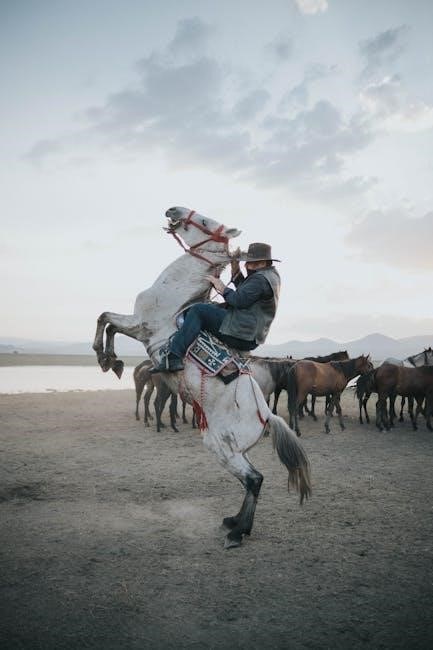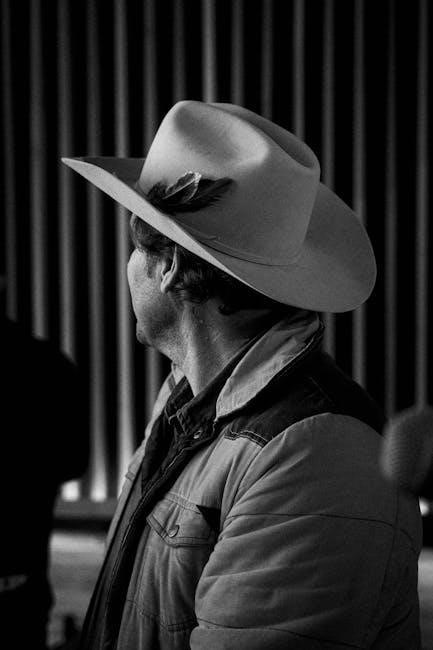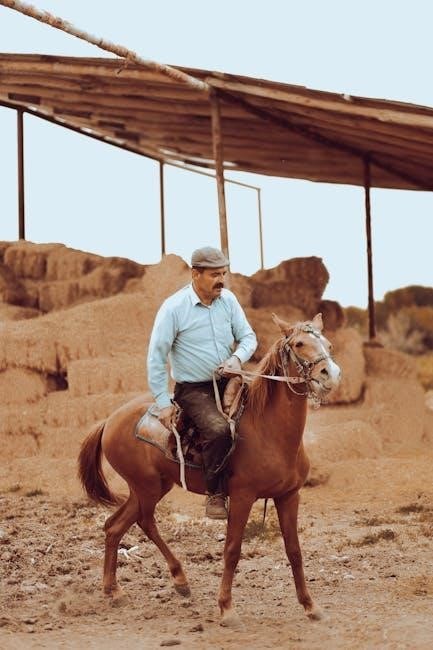Finding the right cowboy hat size is crucial for comfort and style. This guide provides essential information on how to determine your hat size accurately. Discover tips for measuring your head, understanding size charts, and ensuring the perfect fit, so you can confidently sport your cowboy hat.
Embarking on your cowboy hat journey begins with understanding the nuances of hat sizing. Unlike standard apparel, hat sizes involve specific measurements that ensure a comfortable and secure fit. Cowboy hats, in particular, demand precision due to their unique shape and intended use. A well-fitted hat not only enhances your appearance but also stays firmly in place during various activities.
This guide aims to demystify cowboy hat sizing, offering comprehensive instructions on how to measure your head accurately. We’ll explore standard size charts, delve into the subtle differences between brands, and provide practical tips for adjusting your hat for optimal comfort. Whether you’re a seasoned cowboy or a newcomer to the Western style, mastering hat sizing is the first step toward finding the perfect cowboy hat that complements your individual style and needs. By the end of this guide, you’ll be equipped with the knowledge to confidently select a hat that feels as good as it looks.
Measuring Your Head for a Cowboy Hat
Accurately measuring your head is the foundation for finding a cowboy hat that fits perfectly. To begin, gather a flexible measuring tape or a piece of string and a ruler. Stand in front of a mirror to ensure accurate placement. Position the tape around your head, placing it where the hat will sit – typically about an inch above your eyebrows and just above your ears.
Ensure the tape is snug but not too tight; it should feel comfortable without digging into your skin. Keep the tape level around your head to obtain an accurate circumference measurement. If using a string, mark the point where it meets, then measure the string with a ruler. Record your measurement in both inches and centimeters for easy comparison with size charts. Remember, accuracy is key, so double-check your measurement to ensure the best possible fit when selecting your cowboy hat. This precise measurement will be your guide to finding the ideal size, ensuring comfort and style.
Cowboy Hat Size Chart (Adults)
Consulting a cowboy hat size chart is essential after measuring your head. These charts correlate head circumference with standard hat sizes. Here’s a general guide, though variations may exist between brands:
Size 6 3/4: Fits a head circumference of approximately 21 1/4 inches (54 cm).
Size 6 7/8: Corresponds to a head circumference of around 21 5/8 inches (55 cm).
Size 7: Suitable for a head circumference of about 22 inches (56 cm).
Size 7 1/8: Matches a head circumference of roughly 22 3/8 inches (57 cm).
Size 7 1/4: Designed for a head circumference of approximately 22 3/4 inches (58 cm).
Expanded charts may include sizes ranging from X-Small to 3XL, catering to a broader range of head sizes. Always refer to the specific brand’s size chart when possible, as slight differences can occur. If your measurement falls between sizes, it’s generally recommended to choose the larger size for a more comfortable fit. Use this chart as a starting point, but prioritize trying on hats whenever possible to ensure the best fit.
Cowboy Hat Size Chart (Children)
Finding the right cowboy hat for children requires a separate size chart, as their head sizes differ significantly from adults. While some older children might fit into smaller adult sizes, it’s best to consult a children’s specific chart. Here’s a general guideline for children’s cowboy hat sizes:
Up to Size 6 3/4: Generally fits children aged 10 and under. This size corresponds to a head circumference of approximately 21 1/4 inches (54 cm).
Keep in mind that this is a general rule of thumb, and individual head sizes can vary greatly. If possible, always measure the child’s head circumference to ensure an accurate fit.
If the child is unavailable for measurement, consider their age and general size when selecting a hat. Hats with elastic or adjustable bands can provide a more flexible fit, accommodating slight variations in head size. As with adult hats, it’s best to try on the hat whenever possible to ensure comfort and proper fit. Remember that a hat that’s too tight can be uncomfortable, while one that’s too loose may easily fall off.
Understanding Hat Sizes in Inches and Centimeters
Cowboy hat sizes are typically expressed in both inches and centimeters, providing a convenient way to find your perfect fit regardless of your preferred unit of measurement. Knowing the corresponding measurements in both systems is essential when purchasing hats online or from different brands, as sizing conventions may vary slightly.
To convert between inches and centimeters, remember that 1 inch equals 2.54 centimeters. Therefore, if you measure your head circumference in inches, you can multiply that number by 2.54 to obtain the measurement in centimeters. Conversely, if you have the measurement in centimeters, divide by 2.54 to convert it to inches.
Hat size charts commonly list sizes in both inches and centimeters, allowing you to easily cross-reference your measurement and find the corresponding hat size. For example, a head circumference of 22 inches is approximately equal to 56 centimeters, which typically corresponds to a hat size of 7.
Understanding these conversions ensures that you can accurately determine your hat size, regardless of the units used by the manufacturer. This knowledge is particularly helpful when shopping for hats from international brands or when comparing sizing charts from different retailers.
Finding Your Size Between Sizes

It’s common to find that your head measurement falls between standard hat sizes. In such cases, it’s generally recommended to opt for the larger size. A slightly larger hat can be adjusted for a more comfortable fit, while a hat that is too small can cause discomfort and pressure points.
One way to address a slightly larger hat is by using hat sizing tape or foam inserts. These can be placed inside the hat’s sweatband to reduce the overall circumference and provide a snugger fit. These adjustments are particularly useful for hats that are only slightly too big, ensuring a secure and comfortable feel.
Alternatively, some hat retailers offer custom sizing services, where they can tailor a hat to your exact measurements. This is a great option for individuals who consistently find themselves between sizes or who prefer a more precise fit. Custom sizing ensures maximum comfort and eliminates the need for additional adjustments.
Ultimately, choosing the larger size and making minor adjustments is a practical approach when your measurement falls between sizes. This allows for greater flexibility and ensures that your cowboy hat fits comfortably and securely, enhancing your overall wearing experience.
How to Ensure a Proper Fit
Ensuring a proper fit for your cowboy hat is essential for both comfort and style. A well-fitted hat should sit comfortably on your head without being too tight or too loose. To begin, measure your head circumference accurately using a flexible measuring tape. Place the tape about an inch above your eyebrows and around the widest part of your head.
Compare your measurement to a cowboy hat size chart to determine your corresponding hat size. When trying on hats, pay attention to how the hatband feels against your forehead. It should feel snug but not overly tight, and the hat should stay in place without squeezing your head.
Check for any pressure points, especially around the temples or forehead. A properly fitted hat should distribute pressure evenly; Also, gently shake your head to see if the hat stays securely in place. If it moves around excessively or feels unstable, it may be too large.
Consider the hat’s overall weight and balance. A well-balanced hat will feel more comfortable and secure, especially during physical activities. By following these steps, you can ensure that your cowboy hat fits properly, providing both comfort and a stylish look.
Checking for Pressure Points
After selecting a cowboy hat that corresponds to your measured head size, it’s crucial to check for any pressure points to ensure a comfortable fit. Pressure points are areas where the hat feels excessively tight or causes discomfort, potentially leading to headaches or irritation over extended wear. To identify these points, wear the hat for a few minutes, paying close attention to how it feels against your head;
Focus on areas such as the forehead, temples, and the back of your head, as these are common locations for pressure points to develop. If you notice any localized tightness or discomfort, try gently adjusting the hat’s position to see if it alleviates the pressure; Sometimes, a slight shift in the hat’s angle can make a significant difference.
If the pressure persists even after adjustment, the hat may be too small or the wrong shape for your head. In such cases, consider trying a larger size or a different hat style altogether. Remember, a well-fitting cowboy hat should feel snug and secure without causing any noticeable pressure points or discomfort. Prioritizing comfort will ensure that you enjoy wearing your hat for extended periods.
Brand-Specific Sizing Variations

When selecting a cowboy hat, it’s essential to be aware that sizing can vary slightly between different brands. While most hat companies adhere to a standard sizing range, minor discrepancies may exist due to variations in manufacturing processes, materials used, and design specifications. Therefore, relying solely on a generic size chart may not always guarantee a perfect fit.
Before making a purchase, it’s always advisable to consult the specific sizing guide provided by the hat manufacturer. These guides often include detailed measurements and instructions on how to accurately determine your hat size according to their particular standards. Some brands may also offer unique sizing options, such as half sizes or extended size ranges, to accommodate a wider variety of head shapes and sizes.

Furthermore, customer reviews and online forums can provide valuable insights into the sizing tendencies of specific brands. By researching other customers’ experiences, you can gain a better understanding of whether a particular brand tends to run large, small, or true to size. Taking these brand-specific variations into account will increase your chances of selecting a cowboy hat that fits comfortably and looks great.

Adjusting a Slightly Larger Hat
Sometimes, despite careful measurement, you might find yourself with a cowboy hat that’s just a tad too big. Don’t worry; there are several ways to adjust a slightly larger hat for a more secure and comfortable fit. One common method involves using hat sizing tape or foam inserts. These adhesive strips can be placed inside the hat’s sweatband to reduce its inner circumference, effectively tightening the fit.
Another option is to use a hat stretcher, a tool designed to gently expand the hat’s sweatband. By stretching the sweatband, you can create a snugger fit without altering the hat’s overall shape or appearance. However, it’s crucial to proceed with caution when using a hat stretcher, as excessive force can damage the hat’s structure.
For minor adjustments, consider adding a thin piece of felt or fabric behind the sweatband. This can provide a subtle but noticeable improvement in fit. Alternatively, you can consult a professional hat fitter or tailor, who can offer expert advice and perform more specialized adjustments. Remember, the goal is to achieve a comfortable and secure fit without compromising the hat’s style or integrity.
Cowboy Hat Care and Maintenance
Proper care and maintenance are essential for preserving the shape, appearance, and longevity of your cowboy hat. Regular cleaning is crucial to remove dust, dirt, and sweat, which can accumulate over time and damage the hat’s materials. Use a soft-bristled brush to gently sweep away loose debris from the hat’s surface. For more stubborn stains, consider using a mild soap and water solution, but be sure to test it on an inconspicuous area first.
Proper storage is equally important. When not in use, store your cowboy hat in a cool, dry place away from direct sunlight and extreme temperatures. Ideally, use a hat box or a hat rack to maintain its shape and prevent it from being crushed or misshapen. Avoid placing heavy objects on top of the hat, as this can also cause damage.
If your cowboy hat gets wet, allow it to air dry naturally. Avoid using heat sources, such as hair dryers or radiators, as these can shrink or warp the hat’s materials. Regularly inspect the hat for any signs of wear and tear, such as frayed edges or loose stitching, and address these issues promptly to prevent further damage. With proper care and attention, your cowboy hat will remain a cherished part of your wardrobe for years to come.